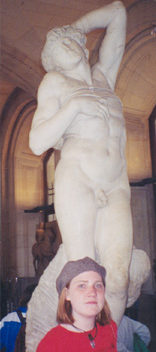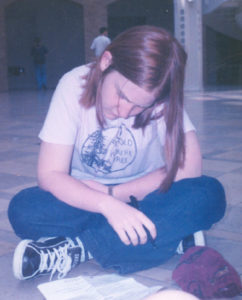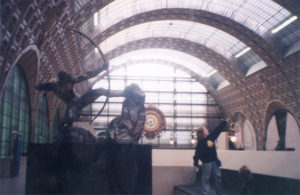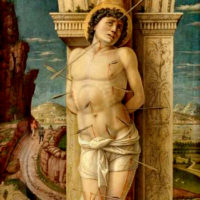On the culling of difficult, meaningful subjects in secondary education.

The Author at age 16, appreciating AP Art History stuff.
In the late 1990s in central Georgia I sat the US equivalent of the Art History A-level: Advanced Placement Art History. It was incredibly difficult. We alternated between rote memorisation of ancient Greek pottery forms, and the sorts of analytical discussions of ‘meaning’ that students in their late teens are rarely pushed to engage with in a structured, academic way. I don’t remember how well I did on the exam and, really, it doesn’t matter. That Art History class inspired my ambition and gave me direction. It didn’t change my life, it gave all the things that I was interested in context and meaning. I entered University filled with confidence about what I wanted to do with my life and Art History has always been part of it.
So much of the discussion of the elimination of the Art History A-levels has focused on how enriching the subject is for learners who eventually work in unrelated fields. That is absolutely the case. Those analytical discussions of intangibles make students better writers and communicators. If art is a proxy for culture, the exposure to and exploration of art from around the world opens students up to alternative ways of thinking and is a reasonable avenue for challenging xenophobia and racism. Great stuff…but what about those of us who, quite literally, use the contents of their secondary school Art History education every day? That’s me. As I sat in 2007 on a beautiful Greek island, logging beautiful archaeological finds from the week’s excavations, I cannot even begin to describe how thankful I was that I had memorised those pottery forms when I was 16 years old. Every time I wrote down “kylix handle fragment”, I felt amazing.

The teenage Author, sitting on a museum floor circa 1998, completing an AP Art History assignment.
I found a career in Art History and I don’t think anyone would call my work soft. I study antiquities looting and smuggling and, these days, art crime, thanks to my Advanced Placement Art History class which was followed by a PhD in Archaeology from Cambridge and a research fellowship and now a Lectureship at the University of Glasgow. Because of Art History, I’ve hacked my way through Central American jungles with a machete to inspect looted Maya sites, picked my way through earthquake damaged temples in South Asia, and driven over dry riverbeds in the dead of night in the rural Andes because the roads were covered in fiery blockades. Art History has brought me salmonella, ring worm and athlete’s foot, severe sunburn, a torn ear drum, and a “high altitude thing” (to quote my doctor in La Paz) that was never fully diagnosed but produced constant fever and kept my at-rest heart rate at 130 bpm. Art history has caused me to live in a tent for 6 month stretches and stay in the kinds of ‘hotels’ where turkeys (two of them!) fall in to your bed through an open window at dawn. Art History has me engaging with policy makers in the UK government, in other governments, and at an international level at the UN, UNODC, and UNESCO. My specific work in Art History, I’m told again by the UK Government and others, is part of our international fight against global terrorism.
Soft?

Look! Over there! A teenager actively engaging as part of an Art History course! Forgive the Author’s attire, it was the 90s.
Where does that leave students like me who see the Art History A-level as their pathway into a rewarding career? With this latest cull, we really are not offering them anything. Yes, it is hard to design tests for Art History and hard to assess those tests. By ‘soft’, critics don’t mean ‘too easy’, they mean ‘too fluffy’. Aside from regurgitating Greek pottery form names, which I promise you IS useful, writing about art is challenging, even for those of us who do that for a living. But so what? Isn’t that exactly why we should be supporting students who choose this ‘soft’ but difficult topics of study?
To paraphrase Kennedy here, shouldn’t we encourage subjects like Art History not because they are easy but because they are hard?
